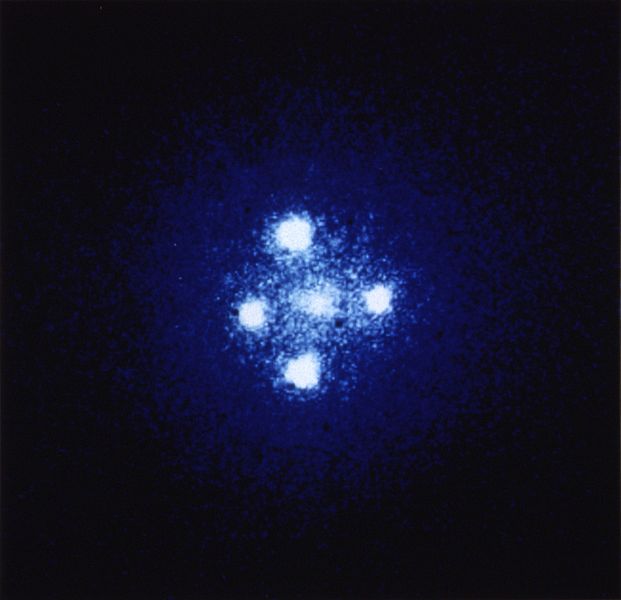Rare Quadruple Quasars – Scientists from the Gaia Gravitational Lenses Working Group (GraL) recently confirmed the discovery of 12 quadruply-imaged quasars, also called “Einstein crosses”. With this discovery now 25% of predicted Einstein’s crosses have been confirmed. The discovery of rare quadruple quasars is important in calculating the fundamental cosmological parameters which will ultimately help reveal the expansion rate of the universe and the concept of dark matter.
What exactly is a quasar?
“Quasars” is short for Quasi Stellar Radio Sources and is termed as the brightest and most distant objects in the universe. The study of quasars is important in understanding the past of the universe. Quasars are found in the galaxies that house supermassive black holes. The center of a galaxy is a dense and compact region with high luminosity and is called an active galactic nucleus (AGN). A quasar can be considered as an AGN of a galaxy but its reverse is not true. AGN depending upon its energy can be classified into seyfert galaxy, quasar, and blazar. It should be noted that not all quasars emit strong radio waves it is only 10% of them. The first quasar (3C 273) identified by NASA’s Hubble telescope is 2.5 billion light-years from the Earth making it one of the closest quasars to our planet.
Newly discovered 12 rare quadruple quasars
Scientists analyzed the data from Wide-field Infrared Survey Explorer (WISE), NASA’s infrared-wavelength astronomical space telescope, to identify possible quasars. These quasars were further studied implementing Machine Learning and Augmented Intelligence (AI) with Gaia, a star mapping spacecraft of the European Space Agency (ESA), to identify the rare quadruple quasars. For a concrete confirmation of multiply-imaged quasars study was also done by few ground-based telescopes such as Keck and Gemini-South Observatories at Hawaii, Palomar Observatory at California, the New Technology Telescope operated by the European Southern Observatory.
To date, only 50 quadruple quasars have been imaged with the first one captured in 1985.
Source
Current Events From Science And Technology–
- Muon g-2 Experiment At Fermilab
- Nora Al Matrooshi – First Arab Woman Astronaut
- NASA’s Chandra X-ray Observatory detected X-rays from Uranus
- Carnivac-Cov: First COVID-19 Vaccine For Animals
Gravitationally lensed quasar
These 12 Einstein crosses are formed due to strong gravitational lensing. The concept of gravitational lensing was given by Einstein in his theory of general relativity. In this theory, the light follows the curvature of spacetime. If a large & massive object comes in between the light coming from a far object, it creates a distortion and it produces a distorted image of the light source. The large mass of the object applies gravitational attraction to the light changing its original path.
In this case, the distant light source is the quasars and the distortion in between might be a cluster of galaxies, the image is seen from a vantage point near the Earth. This setup makes a naturally occurring “cosmic lens”.
The gravitationally lensed light sources (quasars) are most of the time in the shape of Einstein’s ring but the lensing galaxy has an elongated shape. Due to the mismatch of the centers of the lensing galaxy and quasars, a peculiar cross-shape image of the quasar is formed. The fuzzy dot in the middle of quadruple quasars images is the lensing galaxy. The four dots we see surrounding the fuzzy one creates an illusion of 4 quasars!
Importance of rare quadruple quasars
The four dots in the quadruply-imaged quasars have a different level of brightness and it varies with time. More and more studies of the quadruple quasars will give a more accurate value of the Hubble-Lamaítre constant. This, in turn, will help in solving various cosmological puzzles such as the rate of expansion of the universe and dark matter.
